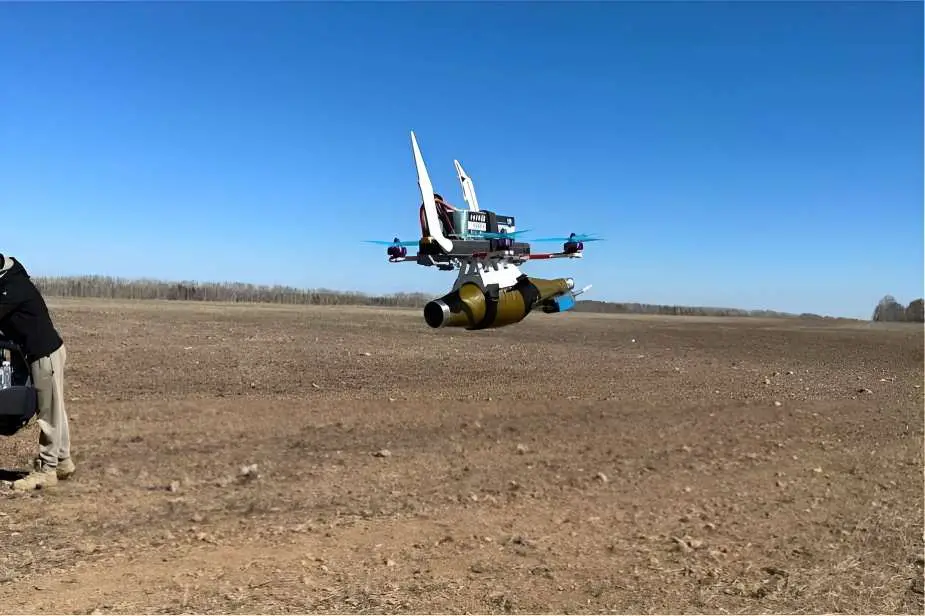- Army
- Conflicts in the world
- Israel - Iran conflict 2025
- Pakistan - India Conflict 2025
- Russia Ukraine War 2022
- Libya conflict day by day
- HAMAS - Israel War 2023
- Operation Serval in Mali French Army
- Sangaris operation Central African Republic
- Sangaris opération militaire République Centreafrique
- Ukraine - Russia conflict
- Syria conflict news
- Defence & Security Industry Technology
- Armies in the world
- Analysis Defense and Security Industry
- Conflicts in the world
- Navy
- Air
Meet 3D-printed Ghoul drone used by Russian Special Forces in Ukraine
According to TASS on October 4, 2023, Russian special forces units started to deploy the Ghoul FPV (First-Person View) drone in the Luhansk Oblast in Eastern Ukraine. This drone offers a flight range of 6-12 km and a maximum speed of 180 km/h. Some components of the UAV, including antennas and body components, are fabricated using 3D printing technology. It is equipped to carry RPG-7 grenades, such as PG-7VL, RKG-3M anti-tank hand grenades, and high-explosive fragmentation charges, which can be produced directly in the combat zone.
Follow Army Recognition on Google News at this link

The Russian FPV drone named Ghoul can carry an anti-tank projectile (Picture source: Russian social media)
The Ghoul FPV drone, designed for engagements with enemy infantry and equipment along the line of combat contact, conducts attacks on enemy positions deep within the front lines. Additionally, the development team has introduced an aerial repeater called the Extender, effectively doubling the drone's flight range.
Previously employed in Russian units in the Donetsk and Belgorod regions, as well as the Kherson area, this FPV drone has proven its effectiveness in intense battles, according to representatives of the manufacturing company.
According to Russian media, the crew operating the "Ghoul" managed to neutralize enemy forces concealed in fortified positions, even in challenging terrain featuring dense forests and elevation changes. The drone's maneuverability allowed it to target enemy dugouts and other positions effectively and enabled it to approach targets stealthily at lower altitudes and speeds.
Used by both Ukrainian and Russian forces, FPV drones like the Ghoul offer several advantages in combat situations. Firstly, the drone operator has a real-time view of the drone's surroundings through a specialized helmet or goggles, facilitating precise control and target acquisition.
Stealth and compactness are also characteristics of FPV drones like the Ghoul, allowing them to execute missions discreetly and minimize the risk of detection and destruction compared to larger unmanned vehicles.


























